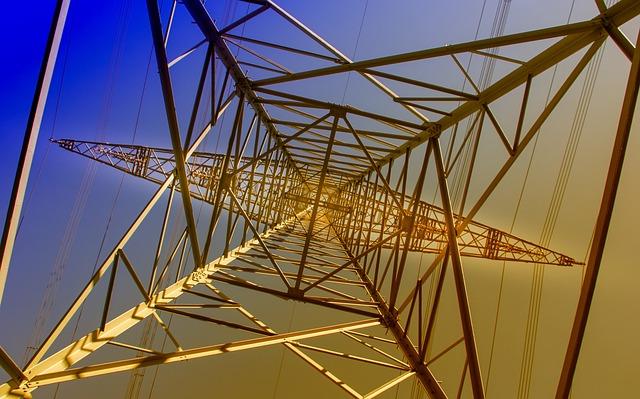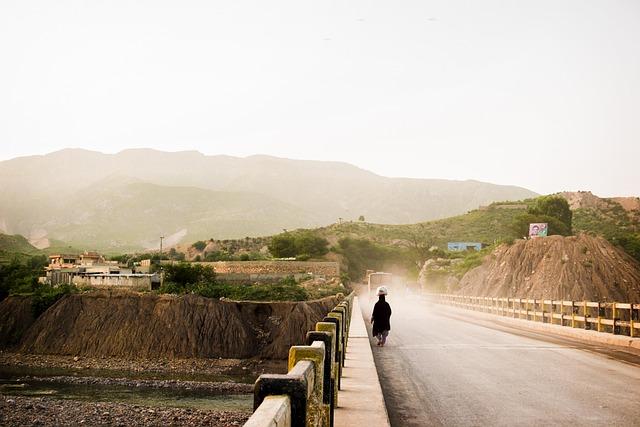Revitalizing Pakistan’s Infrastructure: A Roadmap for Progress
As dawn breaks over the sprawling landscapes of Pakistan, a nation with vast potential stands at a crossroads, eagerly anticipating the promise of progress and renewal. Infrastructure, the very backbone of economic growth and societal development, has long been a critical area in need of revitalization. The roads that interlace the rugged mountains, the railways that connect bustling cities, and the ports that serve as gateways to international markets all beckon for renewed investment and innovation.
In this article, we explore the multifaceted blueprint for revitalizing Pakistan’s infrastructure, examining the challenges that have hindered its growth and the transformative solutions being proposed. From modernizing transport networks to enhancing urban development and embracing sustainable practices, this roadmap aims not only to augment connectivity but also to foster economic resilience and social equity. Join us as we delve into the potential pathways that can lead Pakistan towards a future defined by robust infrastructure and sustainable progress, unlocking the nation’s true potential for generations to come.
Transforming Urban Landscapes Through Sustainable Development
As urban areas expand, the need for innovative solutions that marry growth with environmental sustainability becomes increasingly essential. Green architecture is at the forefront of this transformation, promoting the use of eco-friendly materials and energy-efficient designs that significantly reduce carbon footprints. By incorporating elements such as vertical gardens, solar panels, and water recycling systems, cities can foster a healthier ecosystem while enhancing their aesthetic appeal. This approach not only addresses the immediate needs of a growing population but also contributes to long-term sustainability, ensuring that urban growth does not come at the expense of local communities or natural resources.
A critical component of this transformation is the integration of smart technologies in urban planning. Utilizing data analytics, municipalities can optimize resources and infrastructure to better meet the needs of residents. Consider incorporating practices such as:
- Smart grids for efficient energy management
- Intelligent transportation systems to ease congestion
- Waste management solutions that promote recycling and sustainability
Through such innovative practices, the revitalization of infrastructure not only paves the way for economic growth but also sets a precedent for future developments. A thriving city is one that embraces both progress and sustainability, ensuring an improved quality of life for its inhabitants while preserving its resources for future generations.

Innovating Energy Solutions for a Resilient Future
As Pakistan strives to bolster its infrastructure, a fundamental aspect lies in transforming the nation’s energy landscape. Innovative energy solutions are paramount in ensuring that urban and rural developments are not only sustainable but also resilient against future challenges. By investing in renewable sources such as solar, wind, and hydropower, the country can diversify its energy portfolio and reduce dependence on fossil fuels. This transition promises not only environmental benefits but also economic growth by fostering local industries and creating job opportunities in the green energy sector.
Critical to this journey is the integration of smart technologies within energy systems. Embracing energy efficiency and modern grid solutions can maximize the effectiveness of resource utilization. To further support this initiative, stakeholders should consider the following strategies:
- Public-Private Partnerships: Engaging the private sector can accelerate the development of energy infrastructure.
- Government Incentives: Implementing tax breaks and subsidies for renewable energy projects encourages investment.
- Community Engagement: Involving local communities in planning ensures that solutions meet actual needs and receive grassroots support.
| Energy Source | Potential (GW) | Key Benefits |
|---|---|---|
| Solar | 50 | Abundant, low-cost, local generation |
| Wind | 15 | Scalable, reduced emissions |
| Hydropower | 30 | Reliable, supports water management |

Enhancing Transportation Networks to Foster Economic Growth
Revamping transportation networks is crucial for catalyzing economic development. A well-structured and efficient transport system can lead to enhanced trade, attract foreign investment, and ultimately create jobs. To achieve this, the focus should be on developing key infrastructural elements such as:
- Expansion of Highways: Upgrading existing routes and constructing new highways to improve connectivity between major cities and rural areas.
- Modernization of Railways: Investing in high-speed trains and freight services to facilitate quicker and more reliable transport.
- Enhanced Public Transport: Developing robust public transportation systems in urban areas to reduce congestion and pollution.
- Airports and Ports Development: Improving airport facilities and port infrastructure to boost international trade and tourism.
Moreover, integrating modern technologies into transportation planning and operations can lead to substantial improvements in efficiency and safety. Leveraging smart technologies—such as traffic management systems and logistics software—can streamline operations and optimize routes. A table displaying investment priorities and expected outcomes can provide a clear roadmap for stakeholders and policymakers:
| Investment Area | Expected Outcome |
|---|---|
| Highway Networks | Reduced transit times and costs |
| Rail Infrastructure | Increased freight capacity and passenger mobility |
| Public Transport Systems | Improved access and reduced traffic congestion |
| Ports and Airports | Enhanced trade capabilities and tourism growth |

Integrating Technology for Smart Infrastructure Management
Embracing technology is essential for optimizing infrastructure management in Pakistan. Smart sensors and IoT devices can be integrated across various infrastructure sectors to monitor structural health, resource utilization, and service efficiency in real time. This technology enables decision-makers to gather valuable data that informs maintenance schedules, prioritizes repairs, and enhances asset longevity. For instance, airports could deploy automated baggage tracking systems, while bridges can utilize stress sensors to detect underlying structural issues before they escalate into significant problems.
Furthermore, the adoption of big data analytics and AI-driven solutions can significantly improve predictive maintenance models, ensuring that infrastructure systems function smoothly and are resilient against disruptions. Key components of this integration include:
- Data Collection: Utilizing drones and remote sensors for environmental data.
- Analysis Tools: Implementing AI algorithms to interpret massive datasets efficiently.
- Public Dashboards: Creating user-friendly platforms for citizens to access real-time information.
These strategies not only enhance operational efficiency but also foster community engagement, paving the way for a transparent approach in managing public infrastructure. By establishing interactive platforms, citizens can report issues and provide feedback, creating a more collaborative atmosphere for urban development.
Closing Remarks
As we stand at the crossroads of opportunity and challenge, revitalizing Pakistan’s infrastructure emerges as a pivotal undertaking that could catapult the nation towards a brighter, more prosperous future. The roadmap laid out in this discussion is not merely a blueprint for construction; it is a vision for sustainable growth, community empowerment, and economic resilience. This journey requires a united effort—one that combines innovative thinking, strategic investment, and unwavering commitment from all sectors of society.
As we reflect on the pathways to progress, let us remember that every brick laid today is a step towards tomorrow’s promise. By prioritizing collaboration among government, private sector, and civil society, we can not only enhance our physical landscape but also enrich the lives of those who call Pakistan home. The revitalization of infrastructure is not just an end in itself; it is a means to unlock the potential of our human capital and harness the strengths of our diverse regions.
while the road ahead may be long and fraught with challenges, the rewards of concerted action and visionary planning offer a beacon of hope. With determination, creativity, and a shared sense of purpose, we can build not only the roads, bridges, and facilities required for progress but also a future where every citizen has the opportunity to thrive. Let us embark on this journey together, for a revitalized Pakistan is within our reach.



